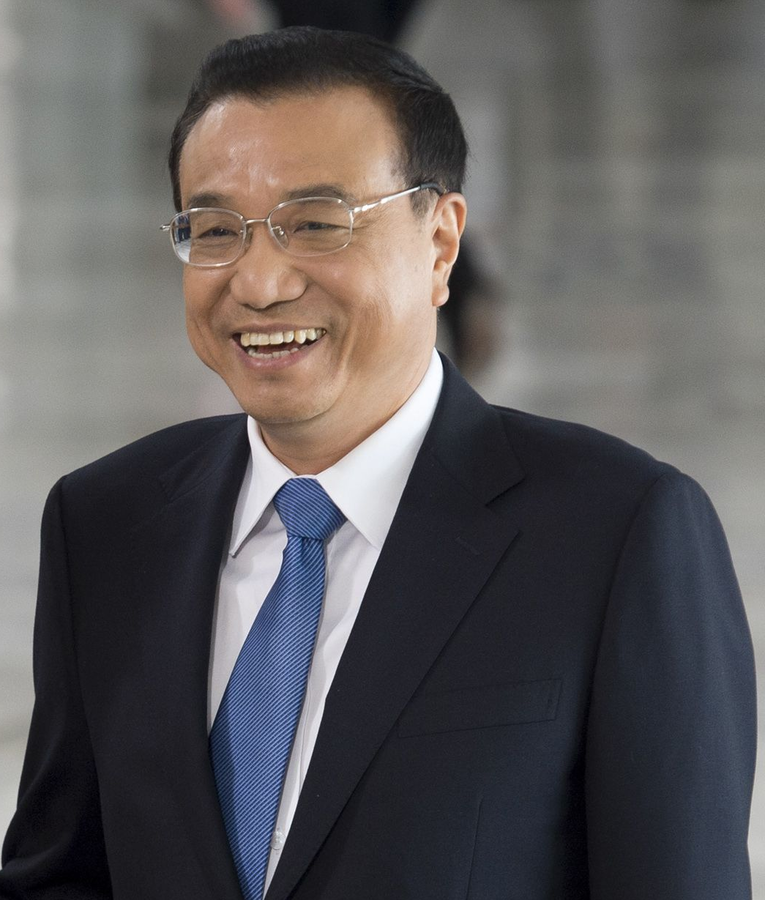
BEIJING — China’s top economic official announced a robust annual growth target and a 7.5 per cent rise in military spending on Tuesday at a legislative session overshadowed by a tariff war with Washington.
In a bid to defuse U.S. and European complaints the Chinese system is rigged against foreign companies, Premier Li Keqiang promised in a speech to the National People’s Congress they will be “treated as equals” with Chinese competitors.
Li set this year’s growth target at 6 to 6.5 per cent, reflecting official determination to shore up a cooling, state-dominated economy and prevent politically dangerous job losses in the face of U.S. tariff hikes and weaker global demand. It is off slightly from last year’s 6.6 per cent growth, a three-decade low, but would be among the world’s strongest if achieved.
The premier promised higher spending on technology development the ruling Communist Party sees as a path to prosperity and global influence and more money for education, social programs and public works construction.
Li warned the second-largest economy faces a “graver and more complicated environment” and risks that “are greater in number and size.”
The two-week gathering of the congress’s 3,000-plus delegates in the cavernous Great Hall of the People is China’s highest-profile event of the year but does little lawmaking work. Instead, it serves as a platform to highlight plans for the year and set the tone for government work.
President Xi Jinping’s government is expected to use this year’s session to announce measures to support economic growth including tax cuts and more support for entrepreneurs who generate China’s new jobs and wealth.
Companies and investors are looking for details of how Beijing will carry out promises to curb the dominance of state industry.
Legislators also are due to endorse a law that aims to ease tensions with Washington and Europe by discouraging officials from pressuring foreign companies to hand over technology. The tariff battle with President Donald Trump was sparked by complaints Beijing violates its free-trade obligations by stealing or requiring companies to give up technology as the price of market access.
A gathering of noncommunist groups held at the same time draws tech billionaires, movie stars and ethnic minorities to the Chinese capital.
Government spending plans reflect “emphatic pro-growth efforts” and a “commitment to offset external headwinds,” said Vishnu Varathan of Mizuho Bank in a report.
Proposed tax cuts of up to 2 trillion yuan ($300 billion) would put “significant spending power” in the hands of consumers and companies and help to buoy sagging demand for autos, household appliances and other goods, said Varathan.
The government wants to “ensure a soft landing,” said Varathan.
Li, the No. 2 leader in the ruling party behind Xi, said Beijing will spend more on technology development including artificial intelligence, electric cars, biotechnology and new materials.
China’s emergence as a competitor in smartphones, telecom equipment, solar power and other technologies has increased the range of products available to consumers and helped to drive down prices. But it rattles Washington and other governments that worry Chinese competition is a threat to their industries and employment.
Spending on the Communist Party’s military wing, the People’s Liberation Army, will rise to 1.2 trillion yuan ($178 billion), the premier said. China’s total military outlay, the second-largest behind the United States, is estimated by independent experts to exceed $220 billion a year when off-budget expenses are added in.
Li said the central government budget deficit would rise from 2.6 per cent of total economic output to 2.8 per cent, reflecting higher spending to stimulate the economy.
The tariff fight with Trump over Beijing’s technology ambitions has rattled Chinese consumers and investors who also worry about weakening real estate and auto sales. That is prompting some to put off spending, which could add to downward pressure on economic growth.
News reports say Washington and Beijing might be close to an agreement to end the battle. But the chief U.S. envoy, Trade Representative Robert Lighthizer, said earlier the two sides still had much work to do.
No agreements have been announced on the core of the dispute: U.S. pressure on Beijing to roll back plans for state-led creation of global competitors in robotics and other technology.
Washington, Europe and other trading partners say those violate China’s market-opening obligations. Some American officials worry they might erode U.S. industrial leadership.
It was unclear whether Trump would be mollified by the technology measure, part of law on foreign investment that state media say the congress is due to endorse.
It would bar officials from using “administrative measures” to pressure companies to hand over technology. Foreign business groups welcomed the proposal but said they need to see details of how it will be enforced to know whether it will improve conditions.
Li tried to reassure investors by promising foreign companies will be “treated as equals” with Chinese enterprises in a “fair and impartial market environment.”
Foreign business groups and governments complain Beijing routinely violates its commitments under the World Trade Organization to ensure such equality, or “national treatment.” They say rules on investment, technology licensing and other facets of business discriminate against foreign companies or shield Chinese enterprises from competition.
Xi and other Chinese leaders have announced changes over the past year including tariff cuts on imported consumer goods and plans to allow full foreign ownership in auto manufacturing. But business groups say those have little impact on operating conditions for foreign companies in China.
Beijing faces a formal WTO challenge filed in July by the European Union against rules on technology licensing the 28-nation trade bloc said improperly hamper the ability of foreign companies to protect and profit from their technology.
Li promised “competitive neutrality,” or equal treatment of state-owned and private companies by Chinese regulators. But he gave no details of how far that might extend for foreign competitors.
“Enterprises under all forms of ownership will be treated on an equal footing,” the premier said.